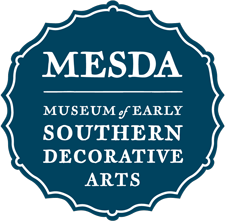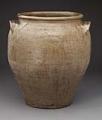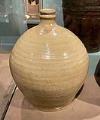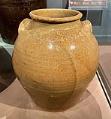Collection: Mariner Southern Ceramics Gallery: Freedom
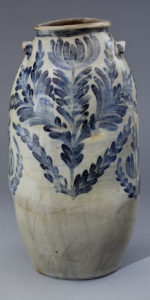
Jar
David Jarbour
Alexandria, Virginia
1830
Salt-glazed stoneware
HOA: 27 3/4″; DIA: 14 1/2″
Gift of Mr. and Mrs. Byron J. Banks (2964)
For generations, nameless and faceless potters have made American ceramics. These potters were European-trained immigrants, American-born entrepreneurs and apprentices, and enslaved Africans. The South’s best-known story of pottery and slavery is the life of David Drake. Dave was an enslaved potter of Edgefield, South Carolina. Known for his literacy and for the poetic musings he inscribed on his large alkaline-glazed jars and jugs, his pots are among the most sought of all Southern ceramics. MESDA is fortunate to have one of the best examples of Dave’s legacy, a massive signed and inscribed jar.
Though less well-known, other black potters—both slaves and freemen—worked in the South. Perhaps even more significant than the Dave jar is this monumental salt-glazed, cobalt-decorated jar by potter David Jabour of Alexandria, Virginia. Born into slavery in 1788, Jabour worked in Alexandria’s stoneware industry under Lewis Plum, the progenitor of the Wilkes Street Pottery, where he trained alongside the white potter John Swann. He ultimately purchased his freedom from merchant Zenas Kinsey in 1820 for the sum of $300 and continued to ply his craft in the stoneware business. Little else is known about his life. Inscribed in Jabour’s hand “1830 / Alexa. / Maid By / D. Jarbour,” this highly decorated jar is the only signed example of his work. Nevertheless, it tells an important American story about enslavement and the quest for freedom, and honors the contributions of African Americans working in the South’s potting industry.
